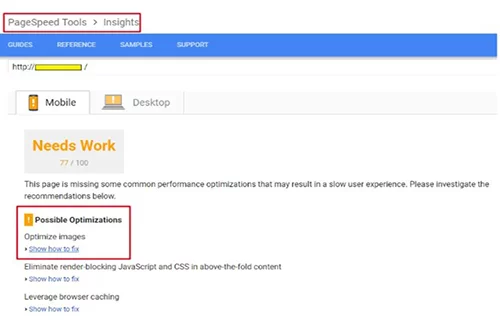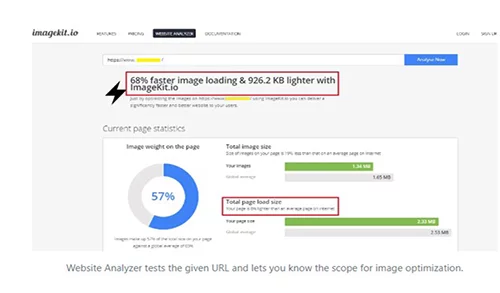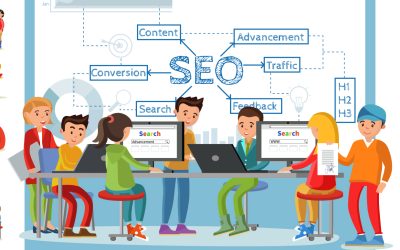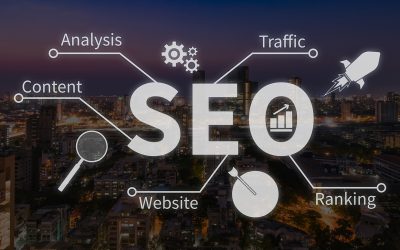Are you looking for an innovative strategy to gain an edge in SEO? If your image optimization is not adequate or up-to-date, you could be missing out on huge traffic and user engagement. Generally, Google considers a wide range of factors when deciding to rank a website for a specific search query. The inclusion of images has been gaining huge significance in recent times, particularly in the case of e-commerce, travel, and media websites. It is estimated that about 90 percent of information transmitted to the brain is visual. The fact is that images, especially those in color, increase people’s desire to view the content. Affordable digital marketing services can design the right optimization strategies to include suitable and attractive images on a website and thereby help users understand the information in a better and easy manner.
The basic goal of image optimization is to reduce the file size of an image without sacrificing quality. Optimized images consume fewer resources, load faster, and positively impact SEO. On the other hand, non-optimized images can consume storage space and lower a site’s loading speed. In fact, roughly 39 percent of visitors will likely leave a website due to a slow image loading time. Image optimization is the key to improve a website’s overall performance and provide a better experience for visitors. A well-optimized image can have a huge effect on a website’s performance and the user experiences offered and make a website stand out from other sites. By making a few changes to the current image process, a website can gain more traffic and leads, resulting in more sales.
What Is Image Optimization?
In simple terms, image optimization is the process of adjusting high-quality web images to use the appropriate format, dimension, and resolution while keeping files as small as possible. The process involves delivering high-quality images in the right format, dimension, size, and resolution while maintaining the smallest possible size. Optimizing and adjusting images improves a website’s speed and overall performance, including its SEO rankings and user experience.
The following are the essential elements of image optimization:
- Choosing a File Format: Image files come in a variety of formats. The most often used ones are JPEGs and PNGs, however WebP has gained popularity because it frequently offers greater compression.
- Compression: While seamless compression maintains all image data but achieves lower compression rates, lossy compression reduces file size by deleting image data.
- Resizing: Images must be scaled to the proper dimensions for the site. The pace of the website may be slowed down by serving larger images than necessary.
- Responsive images: Using strategies like “srcset” to create responsive images can guarantee the best possible performance and display on a range of screen sizes.
- Alt Text: Including informative alt text improves accessibility and SEO. Alt text helps visually challenged people and search engines interpret the information.
- Image Sitemaps: By including images in sitemaps, search engines can better index them.
- Caching: Recurring visitors’ load times can be shortened by enabling browser caching for images.
- Lazy loading: By using lazy loading, off-screen images can be delayed until users scroll close to them.
Importance and Benefits of Image Optimization
The importance of images in connecting users to a website’s products and services has been proven. It is estimated that half of the users love websites which load in less than 2 seconds. Almost 40 percent of visitors tend to leave the site if it takes more than 3 seconds to load. Increased bounce rate will eventually affect conversion rate and sales.
Image optimization is one of the most significant on-page SEO techniques. Implemented correctly, it can significantly improve a site’s ranking, page speed and user experience. When images rank well in the image search section of Google, it can increase traffic contribution from organic search.
Discussed below are some important benefits of optimizing web images –
- Improves Page Load Speed – Page load speed is the amount of time taken by a web page to load completely. It depends on many factors, ranging from website host to website layout and design. Most users prefer websites with a load speed of less than 2 seconds. Therefore, if you optimize 64 percent of a website’s weight – that is, images – it will improve your site’s load speed and enhance the user experience, leading to more people interacting with your products and services. There are many tools such as Google’s PageSpeed Insights, Web Page Test, and ImageKit’s Website Analyzer to analyze page load speed and provide complete insight about the page.
Image source:
- Improved SEO Rankings – Google also considers page load speed as an essential element in determining the rankings of the pages. For many websites, this is a hassle they need to navigate around. Implementing image optimization techniques can ensure page load speed is as good as possible. It is imperative that image optimization is performed to its full potential before or after launching a website so that the search engine rankings are intact. With high SEO rankings, a website does not just have a better chance of being clicked on but also has a chance to make a positive impact on users by offering a holistic user experience.
- Boosts Conversions – Loading speed of a website page is directly linked to SEO ranking and conversions. In fact, there has been a lot of research among marketing leaders about the relationship between conversions and page load speed. According to a survey by Kissmetrics, about 79 percent of shoppers who are not satisfied with the web page speed or performance do not buy from the same site again. Image optimization helps in getting a higher rank in search results. It directly means that a website can capture more users and possibly get more conversions, if all the images are properly optimized.
- Enhances user engagement – Optimized images have proper title and alt text, which are used by both search engines and screen readers to understand the context of the image. Page load speed is directly related to SEO ranking and conversions. For instance, a study found that 79 percent of visitors who are not satisfied with the page load speed were not willing to engage with the same website again. This shows the importance of image optimization for a web page. Optimized website images improve page load speed and provide a better user experience. A properly optimized website with good quality content, including images, will attract more visitors. If they share the link to your site with their contacts who are interested in the same thing, this will bring more visitors to your site.
- Better Use of Resources – When your resources are limited, it is very important to find a way to get the most of the limited disk space. Large images take up more storage space and require more bandwidth for the files to be transferred successfully to users’ web browsers. Image optimization makes it possible for small website owners to significantly reduce the amount of bandwidth and disk space necessary to display and store their images. Website visitors will also benefit as optimized images will reduce the page load time. In addition, it will take significantly less time to back up a small website.
- Lower bounce rate: Slow and heavy websites often drive users away. Therefore, you increase the likelihood of people staying on your website by optimizing your photos and speeding up page loads.
- Saves Server Memory: Image optimization plays a crucial role in saving server memory and reduces extra server load. For example, if a website has two same images, one image size is 900kb and another image size is 340kb, using the second image will put low weight on the server, thereby saving bandwidth.
- Supports Other SEO Efforts: Image optimization supports other SEO efforts. A well-optimized image can improve page engagement and increase the chances of an image showing up in the image carousels on search engines. Incorporating the right combination of format, title, title text, alt and text can enable images to perform well in search results. At the same time, a page with relevant content and images that are optimized can earn a higher number of social shares and even backlinks from other sites.
- Makes a Website More Accessible – Certain optimization steps, like adding alt tags, can make a website easier to navigate for those using screen readers. Web accessibility is not only good for site visitors; it is also good for SEO. Though image optimization is a challenging and time-consuming process, the SEO benefits are worth the effort as this can extend a website’s reach and strengthen its reputation online.
In this rapidly changing digital world, every single factor related to a website’s performance needs serious consideration. User expectations are only going to increase in the coming years. Image optimization in SEO is an important aspect that cannot be ignored. Its benefits are not restricted only to the page load speed and SEO ranking. Image optimization can boost conversion rates, sales and revenue. Just like image optimization, overall search engine optimization of the website is equally important. Partnering with professional affordable digital marketing services can help you post suitable and attractive images and optimize them in the right way to improve your search ranking.






